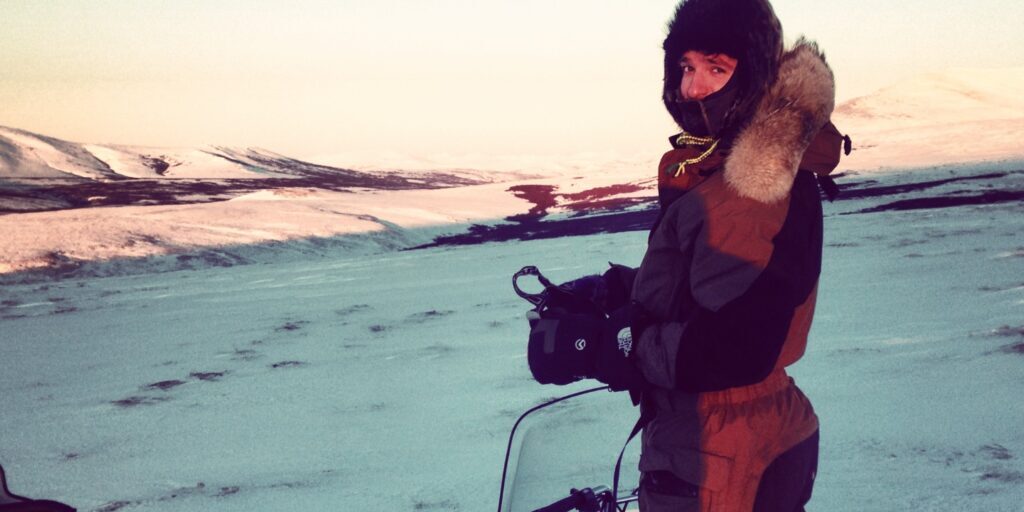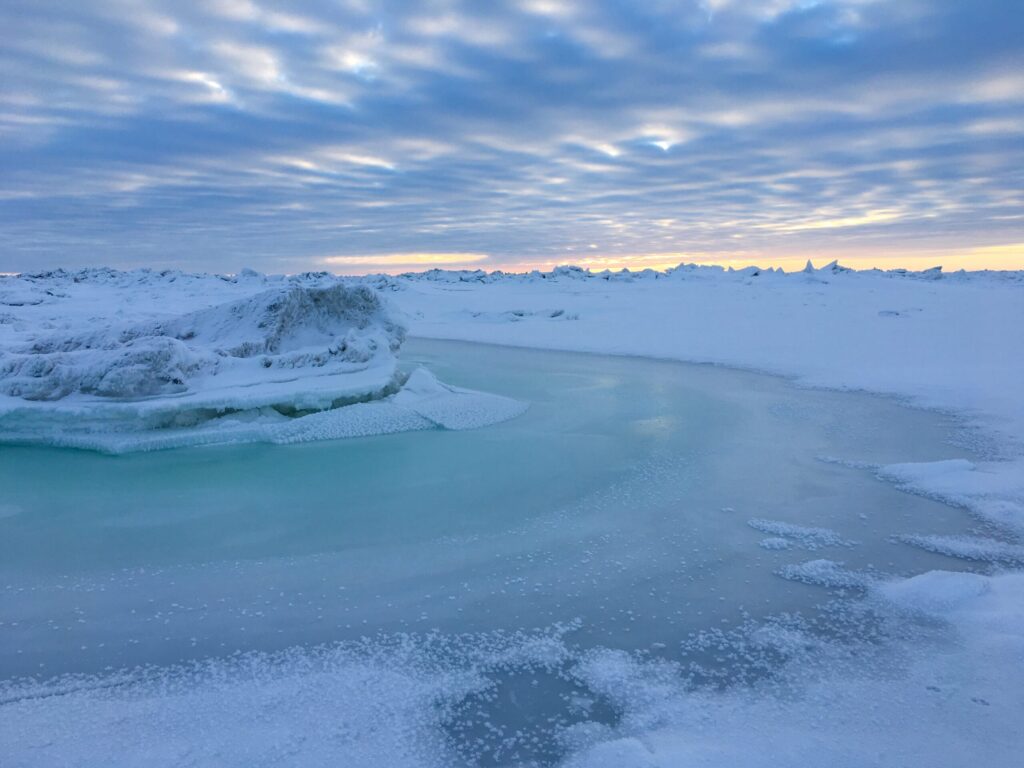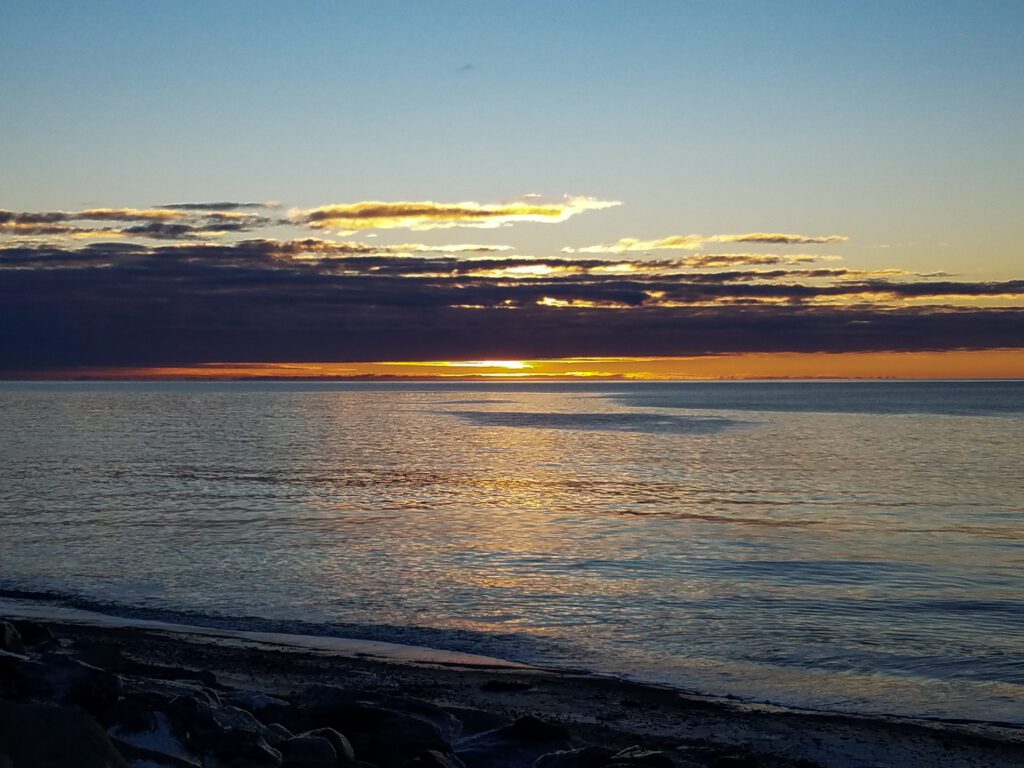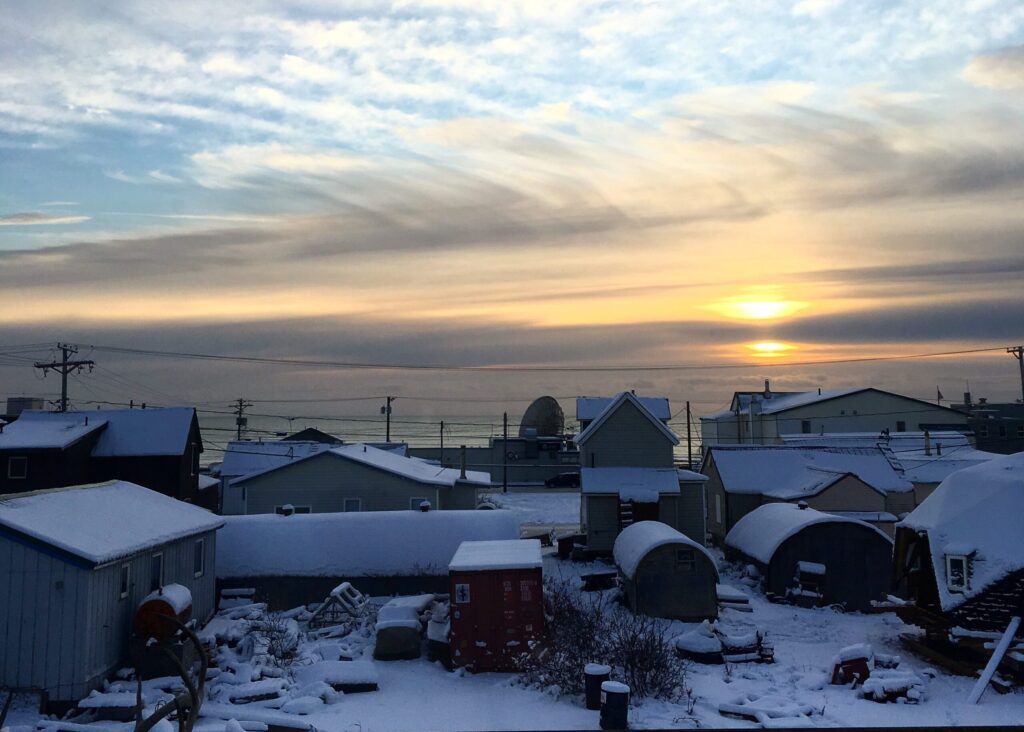The accoutrements of winter are on full display these days as the temperature finally creeps lower, and layers of snow pack down like sediment.
What were novel ideas a few months ago—like snowmachines raring down the street—are now just regular things. And what was once hypothetical equipment to imagined lives—snowshoes, dog sleds, balaclavas, guns—are part of the weekend.
A friend told us months ago at dinner that it’s miserable to just try surviving winter. The season here is too long, brutal, and depressing to just eek through. Better is finding a way to revel in cold-weather activities, whether it’s snowboarding, snowmachining, snowshoeing, or snow-anything-ing. We volunteers have neither the pre-requisite tools nor the expertise to be able to “get out” very far on our own. So, like many things here, we’re dependent on the kindness/consideration/charity of others to explore new terrains.
As I get to do more cool Alaska-y stuff the foreign-feeling gear turns more familiar, less exotic and estranged. Doing a thing once—even once—makes it real, tactile, personal. Firing a shotgun left an impression: a literal, bruised impression in the crook of my shoulder, and a demystified glimpse of gun-as-tool instead of a sinister character in tragic news.
One of the gifts of being in Alaska at winter is intimate proximity to equipment that would be radical and outlandish in less radical climes. The utility of a sealskin hat, balaclava (a good face-mask), arctic jumpsuit, and heavy-duty “bunny boots” were not clearly, physically evident until I was taken out snowmachining at “dawn” (11:30am) on Sunday. Ambient, cold air is one thing. But whipping over wind-stripped ridges on a snowmachine is its own unique tactile extreme. After about 45 minutes the part of the balaclava near my mouth was frozen, burning my cheek and lips, specks of ice making my beard brittle as it fused with the fabric. But my head, my chest, my feet—all thoroughly geared up—were sweating. Zooming around miles out in the tundra, the unsightly sub-Arctic regalia did its job impeccably.
Last week was my second time hunting (ever), and I was following a madman. Our boss’s son, Sam, let me tag along on a Saturday as he plodded over frozen streams and through thickets of willows looking for ptarmigan—fat white birds that stick around the tundra in the winter. Ptarmigan hunting, I learned, is less about meat than an auspice for getting out into country. And hunting (I double learned) is just a hike with a gun and high hopes. Though Sam got a few shots off, we didn’t get anything that day except hours and hours of vigorous, body-wracking exercise. I’d never snow-shoed before: it had all of the peculiar muscle-work of skiing with none of the fun or help of gravity. After five hours of following Sam over ridges, across river banks, and through dense shrubbery to investigate bird and otter tracks my feet were blistered, my gluteal muscles trounced, and my language faculties curiously absent. I was tired—as body-weary as I can recall being in years. I couldn’t lift my legs more than a few inches when we finally got back to the car after the sun had set and the wind picked up. As a consolation present Sam let me shoot one of his guns at the dusk. I scorned my snow-shoes, but without them I’d have never made it far enough off the road to peek streaks of fox tracks, curious river-otter holes, insulated beaver lodges, and our long shadows skittering over the glinting surfaces of thin, frozen streams.

And on Sunday—after I’d gotten back from snowmachining—Sam and two of his kindly siblings, Jenna and Rosa, and their friend Scott, brought four of us volunteers to a shooting range. It was cold, loud, and, as reticent as my New England Liberal (NEL) upbringing is to admit it, very, very fun. I don’t mean guns writ large are fun, because I don’t think you can divorce a tool from the context in which it’s applied (is a hammer “fun” without nails to bash?). But it was very fun to spend a chilly afternoon plinking at rows of glass bottles with a pastel of friends, half of whom offered superb instruction on everything from safety to how to brace a Mosin Nagant. And it was fun to learn how to use powerful tools within one of their few benign, sanctioned applications. I felt the same way when my step-father taught me how to use a band saw, except my ears rang slightly less. I am in no hurry to buy a rifle of my own (what would I use it for? I have no hunting license), but I am grateful to now have a tactile, experiential knowledge of formerly cryptic terms like “chamber,” “magazine,” “shell,” “cartridge,” and “bolt.” For those socialized into gun culture these probably sound blandly basic. For someone like me raised in a state with few hunters and a robust trust in government, this alien lexicon takes on different meanings with each trip out for ptarmigan or jaunt to the range.

Winter, mild though it’s been so far, is proving a learning experience. The equipment to not just survive but revel in the threatening weather is new, and I’d have no clue what to do with it if there weren’t so many people here willing to bring me along to try new things. The gear is specific to practices, and the practices specific an extreme locale worth charging into headlong. Donned in a fur hat, though. Obviously.








